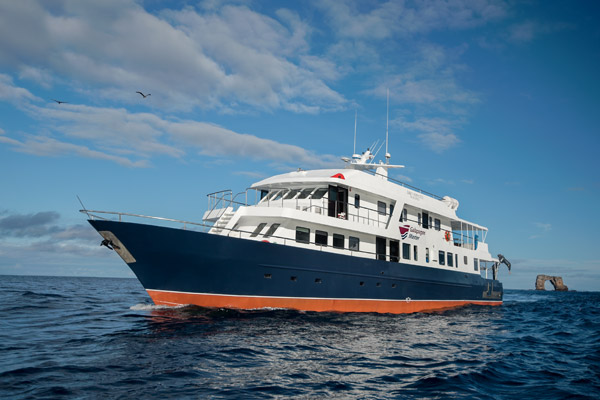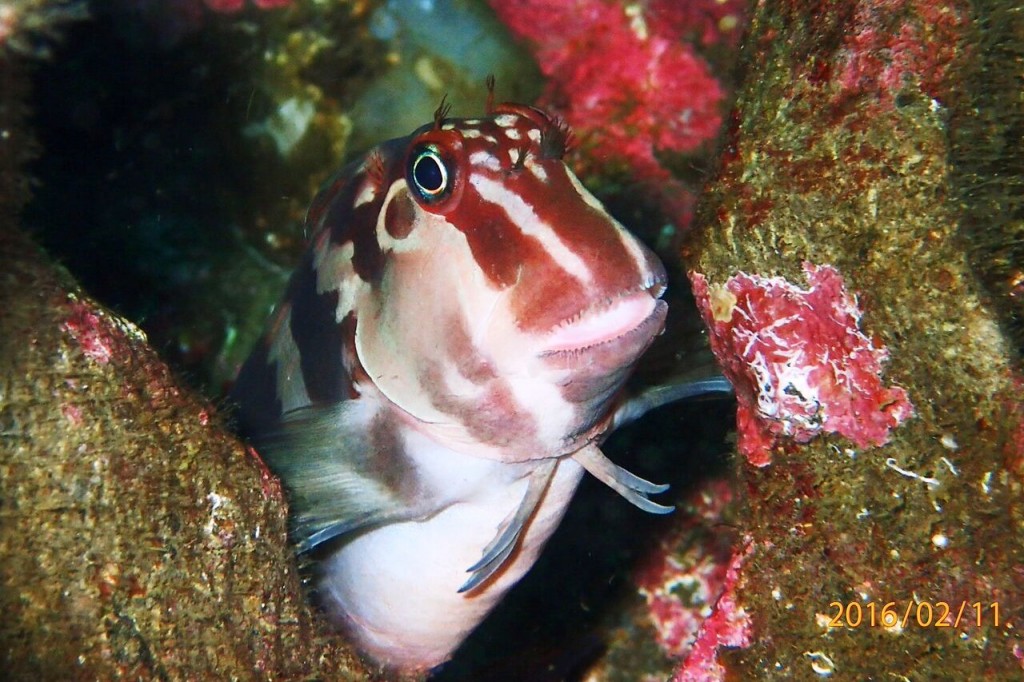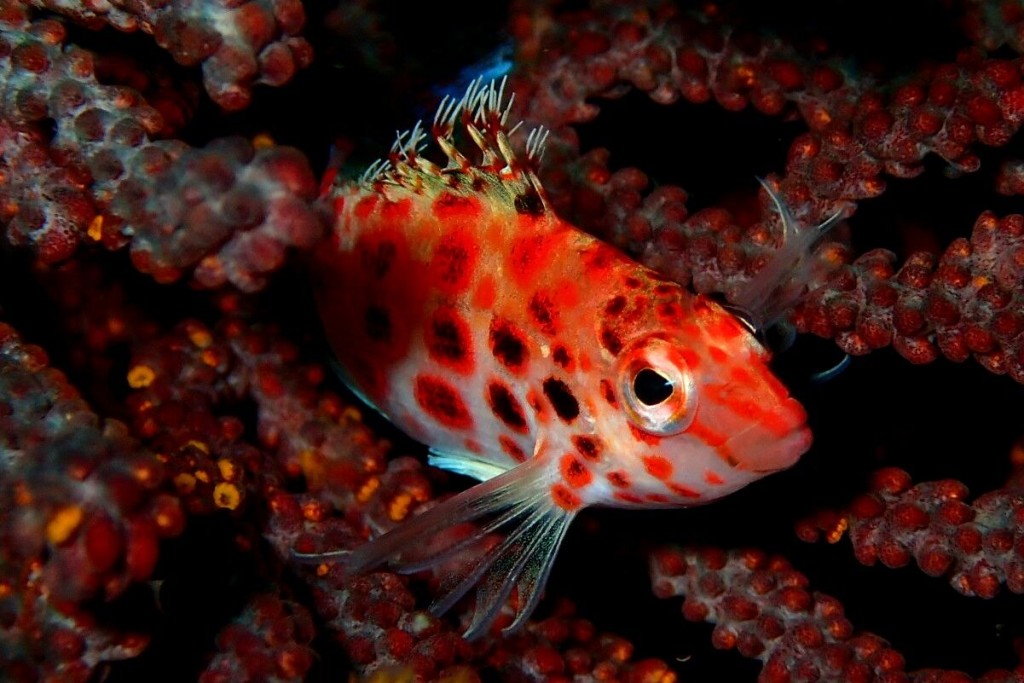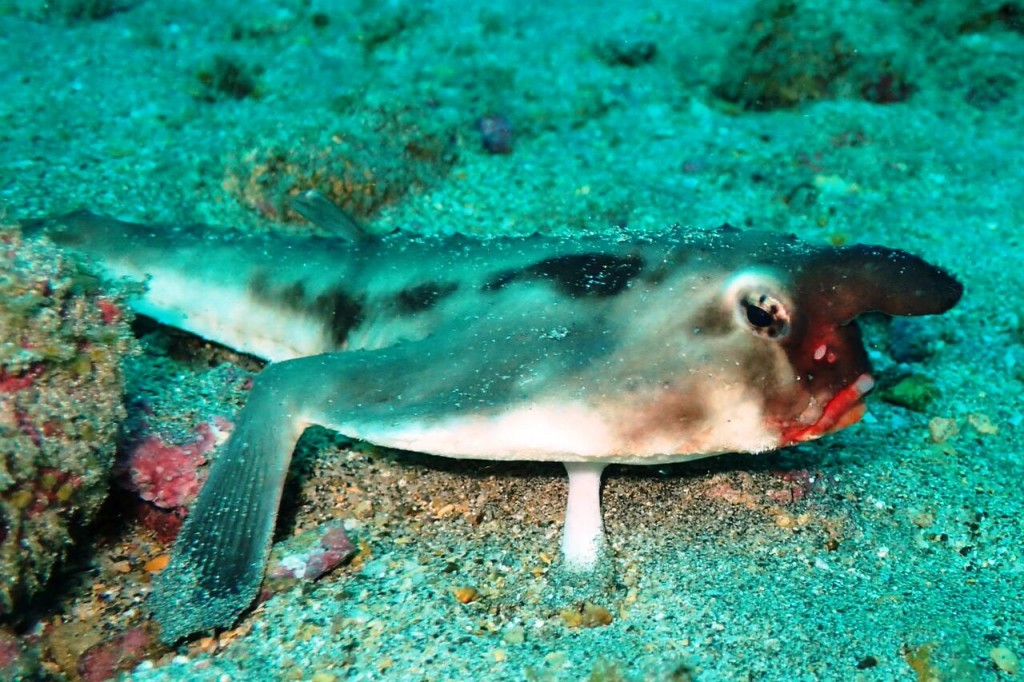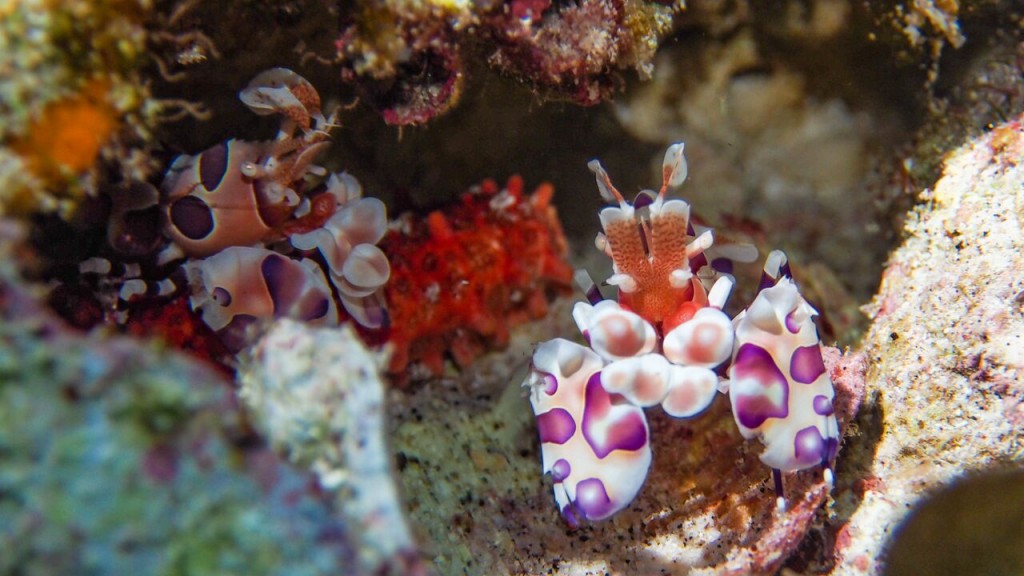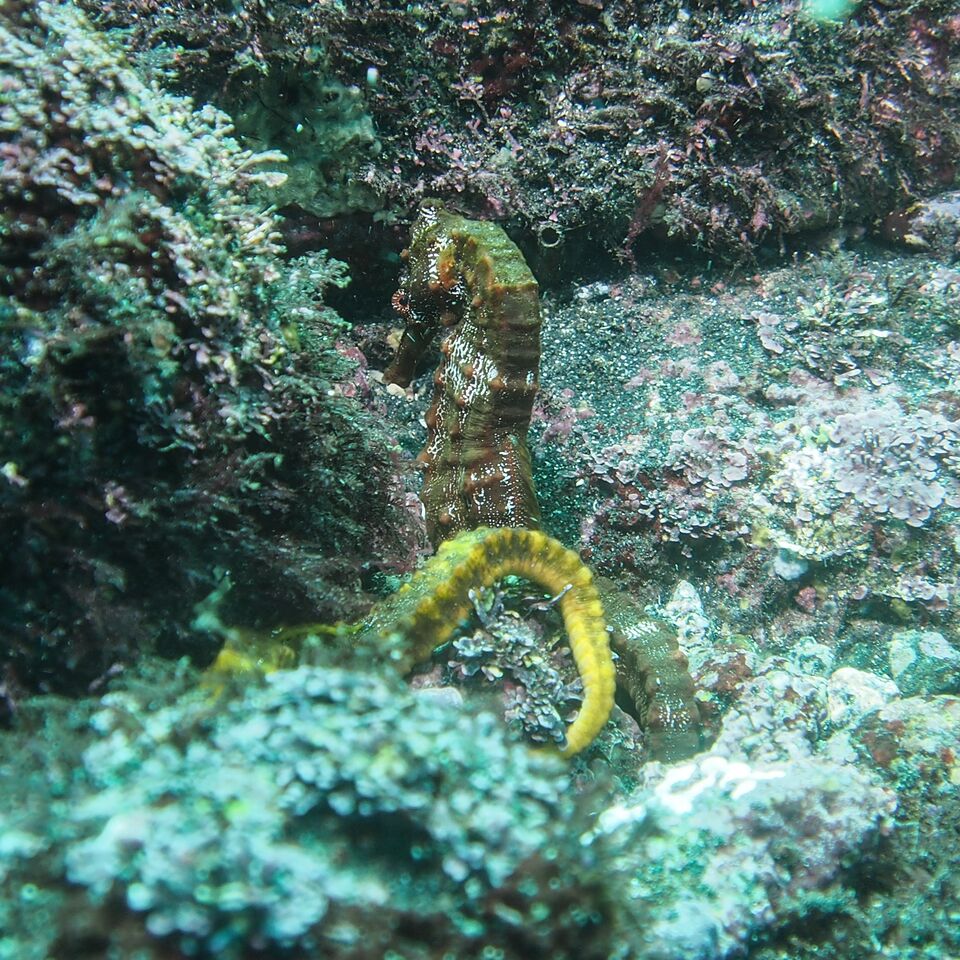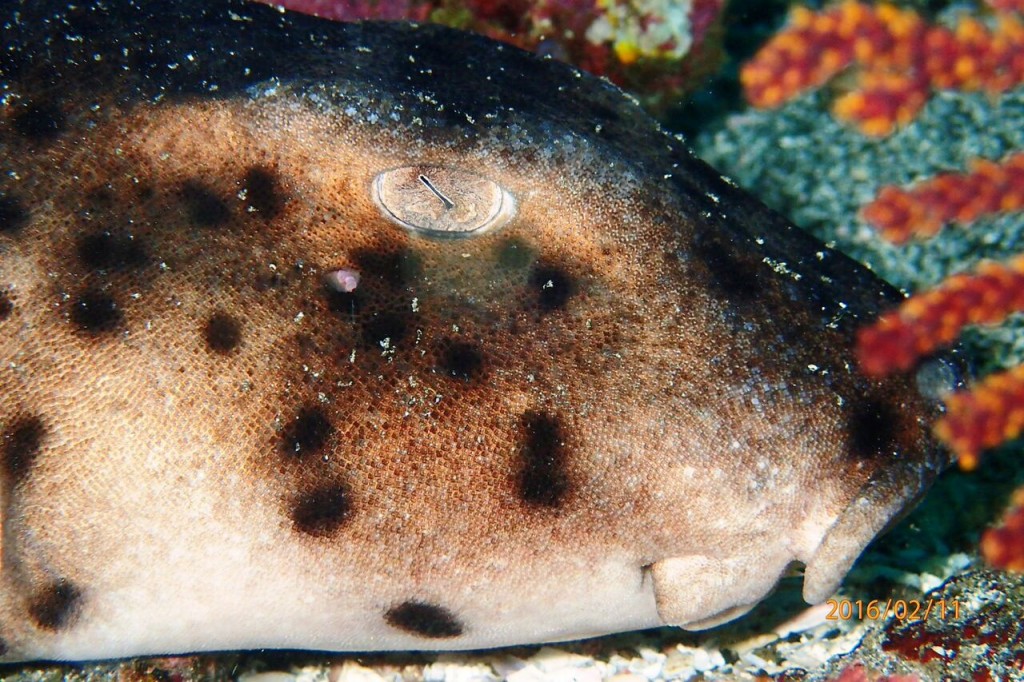News
All Creatures Great and Small in the Galapagos
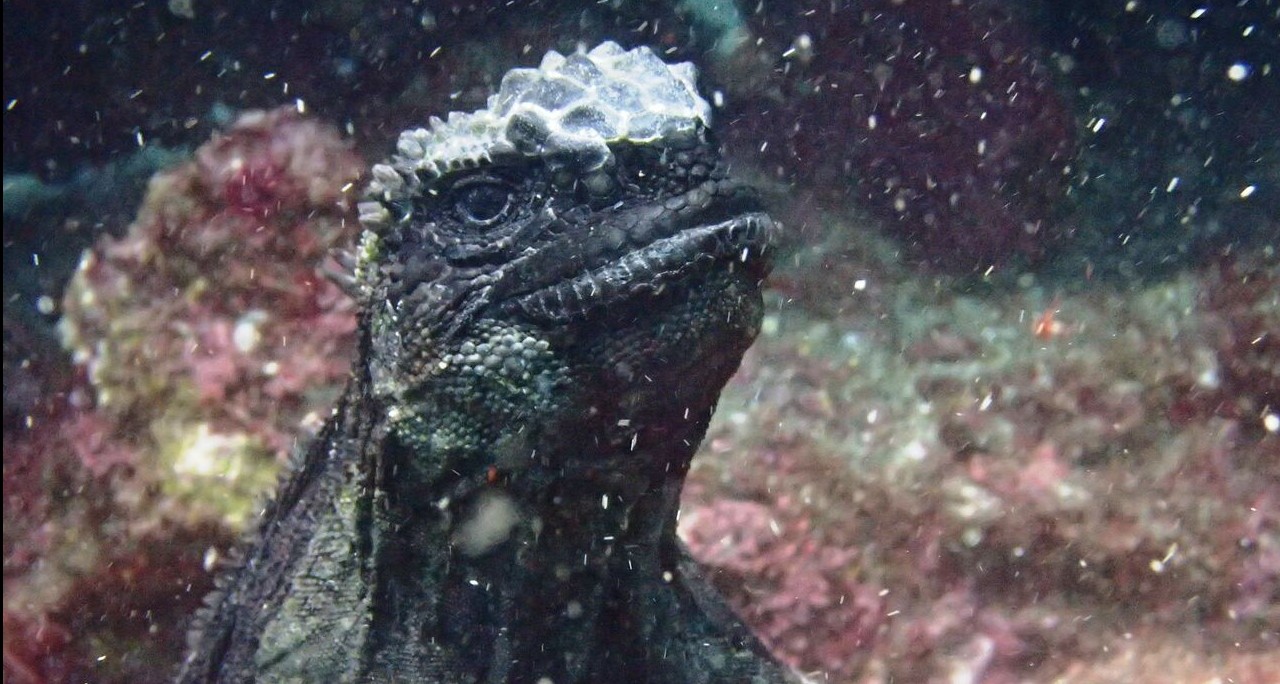
“Macro Photography” and “the Galapagos” are not two phrases you would commonly hear in the same sentence. The majority of divers and underwater photographers travel to the Galapagos Islands for the abundance of hammerhead sharks and other large pelagic fish species. With the focus of attention on the wealth of life out in the blue, there is a tendency to overlook the smaller creatures, but on a recent trip aboard the Galapagos Master I decided to put my new TG4 camera to the test and do a bit of critter hunting.
Before you all start hollering in disbelief, I of course had my time gazing in awe as schools of hammerheads came in to be cleaned by the king angelfish. I, like the rest of our dive group, excitedly snapped away as a whale shark cruised by us at Wolf Island and diving with Mola Mola at Punta Vicente Roca was a dream come true. Yet in between all that action there was a good deal of waiting around holding onto the rocks, so it was easy to spend some time checking out the cute blennies or marveling at the curious hawkfish.
Like most dive sites, if you look hard enough at the reef or rock wall there will always be something of interest to photograph. At Darwin and Wolf islands the blennies were happy to pose and an easy, fascinating distraction whilst waiting for more hammerheads. My favourites were the large banded blennies, due to their gaping mouths and attractive cirri, but also the ability to photograph them in different settings.
Along the reefs wall of Cabo Douglas and Isabella Island amidst black coral bushes and seafans there were dozens of Long-nosed and Falco hawkfish. Now anyone who has ever tried to take a photo of the long-nosed variety will know they are tricky little critters who like to hop and hover about, flitting off just as you got the focus set. But not so with the ones seen in the Galapagos. Perhaps they were unused to divers and flash photography but they seemed happy enough to hang about and pose for me. I experienced the same action again at Cousin’s Rock where 3 of the Falco variety happily stayed in place, turning occasionally to give me a different angle – how very obliging!
Possibly the most odd looking fish to be found during the trip, the Red-lipped batfish is a flattened pancake shaped fish with protruding “lips”, beady eyes and pectoral fins adapted into walking appendages. We found our first ones at Wolf Island, resting down on the sandy seabed at 27-32m. These fish can be approached by divers but you need to be cautious as they can swim pretty fast and tend to head directly to deeper water. Positioning ourselves between the deep and the batfish the photographers among us were able to get some cracking shots. We also discovered that we had seen the lesser known Rosy-lipped batfish too. These can be identified by the small white hairs under their chins! Another one was found at Cabo Douglas too.
Red rock crabs could be found scurrying over the rocks at almost every dive site and were easy to photograph both in and out of the water. But it was during our batfish hunting dive that I managed to spot a tiny shrimp exhibiting symbiosis with its seastar host – admittedly my photo is pretty bad but i was happy to find it in any case. Though the most surprising find was whilst drifting over the sandy reef at Darwin’s Arch. Our guide, JC, spotted two Harlequin shrimp busy tackling their seastar meal. This was totally unexpected; I’ve only seen a few harlies in the Philippines so was in no way anticipating finding any in the Galapagos. I think JC was as surprised as we were!
I read about the possibility of seahorses on the Galapagos Master itinerary, so upon arrival at Cabo Douglas we asked about the opportunity to look for these critters. The majority of us have seen seahorses of many varieties but for one of our group it was a first time experience. We found 2 curled around a coral frond in the shallow water. These pacific seahorses are far larger than their Indo-Pacific cousins and gigantic when compared to the miniscule pygmy seahorses of Raja Ampat.
Aside from these fascinating tiny critters we were able to closely approach both turtles and the Galapagos horn shark for a bit of eye candy, we found numerous lobsters and scorpionfish and it was relatively easy to get up close with the marine iguanas as they were feeding on the algaes. The shallow water with surge and low visibility made photographing them a challenge but certainly everything was possible. The anemones at Punta Vicente Roca also provided colourful macro subjects.
There are so many interesting creatures to see and photograph in the Galapagos Islands that no dive, even if lacking the big fish action, will ever be dull. Consider bringing a macro lens with you and dedicating at least 1 dive to a bit of critter spotting.
Susie took a 10-night trip aboard the Galapagos Master Liveaboard, departing from San Cristobal Island.
Blogs
Discover Curaçao with the Ultimate Dive Vacation Guide – 2024 DEMA Special Edition

Dive Travel Curaçao is thrilled to announce the launch of the Curaçao Dive Vacation Guide – 2024 DEMA Special Edition, an expertly curated resource that unveils the unparalleled dive experiences and vacation possibilities awaiting you in Curaçao. Produced exclusively for the Diving Equipment & Marketing Association (DEMA) Show 2024, this special edition guide is packed with exclusive insights, travel tips, and limited-time DEMA offers that make it easier than ever to explore Curaçao’s stunning underwater landscapes and vibrant culture.
Explore Curaçao’s Unmatched Diving Opportunities
With over 70 diverse dive sites along its southern coastline, Curaçao is a bucket-list destination for divers of all experience levels. From thriving coral reefs and intricate marine ecosystems to historic shipwrecks, the island offers a variety of underwater experiences that are hard to match. The Curaçao Dive Vacation Guide – 2024 DEMA Special Edition provides detailed recommendations for both shore and boat diving, making it a valuable tool for divers seeking the best entry points, pristine reefs, and hidden treasures along the coastline. Whether you are an avid wreck diver, or a beginner interested in shallow reefs, Curaçao has it all.

Uncover Eco-Friendly Dive Resorts and Top Dive Operators
This DEMA 2024-exclusive Curaçao guide goes beyond diving to feature insider information on Curaçao’s eco-friendly accommodations, dive resorts, and top-rated dive operators committed to sustainable dive tourism. From all-inclusive resorts that support coral reef restoration initiatives to charming boutique hotels near prime dive locations, the guide helps travelers find the ideal stay to match their vacation goals. It also spotlights trusted dive operators on the island who prioritize environmental preservation, offering travelers a way to enjoy the underwater world responsibly.

Immerse Yourself in Curaçao’s Culture, Culinary Delights, and Adventure
Curaçao offers a vibrant Caribbean culture rich in history, music, and culinary fusion. The guide reveals Curaçao’s hidden gems, including culinary hotspots, historical sites, and eco-tourism opportunities that will appeal to both divers and non-divers. Visitors can explore the island’s iconic architecture, savor a diverse range of dishes influenced by Caribbean, European, and South American flavors, and embark on land-based eco-adventures, such as hiking, cave exploration, and visiting national parks.

Exclusive DEMA 2024 Specials and Limited-Time Dive Packages
This special edition guide features limited-time DEMA 2024 offers on dive packages, accommodations, and excursions. Travelers who book through Dive Travel Curaçao, or our Curaçao dive travel partners attending DEMA, will have access to exclusive discounts on custom dive vacation packages, making it easier to plan an affordable, high-quality dive trip that fits your preferences. The Curaçao Dive Vacation Guide – 2024 DEMA Special Edition is designed to simplify your travel planning and help you dive deeper into the incredible experiences that Curaçao has to offer.
It’s Time to Dive Curaçao!
Now is the time to discover why Curaçao is a top dive destination in the Caribbean! Dive Travel Curaçao invites you to experience an unforgettable dive vacation with exclusive DEMA 2024 specials tailored just for you. To secure your spot, download a copy of the Curaçao Dive Vacation Guide – 2024 DEMA Special Edition and contact the Dive Travel Curaçao team to start customizing your Caribbean dive adventure today.
For more information and bookings, please visit Dive Curaçao’s website or contact our reservations team directly.

News
Santa Divers take the Plunge for Charity

Ho Ho Ho! Vobster Quay’s recording-breaking charity Santa diving event returns on Sunday 15th December 2024 for another round of festive fundraising frivolities. Run in aid of the Royal National Lifeboat Institution (RNLI) and Help For Heroes, this ever-popular annual fundraising event aims to raise sack-loads of cash for these two very deserving charities.
Divers of all levels are invited to grab their Santa outfits – and as much festive cheer as they can muster – and head down to Vobster Quay near Mells, Somerset for a mass sponsored Santa dive in aid of charity. In previous years, the event has attracted divers from the far corners of the UK to join in the festive merriment for a final festive dive before the Christmas and New Year break. Back in 2015, the event smashed the world record for the most Santa divers with 188 divers taking to the waters donning their festive finery – a record that remains unbeaten to this day!

Vobster Santas isn’t just about setting records – it’s also about raising some serious cash for charity. Vobster Quay encourages all divers to get into the spirit of the season to raise much-needed funds for two very deserving charities – the Royal National Lifeboat Institution (RNLI) and Help For Heroes.
Through individual sponsorship and online donations, divers can invite their friends, family and work colleagues to sponsor them to plunge into the balmy waters of Vobster Quay dressed in full festive finery. Since the very first Santa dive in 2007, the event has raised over £52,000 for charity. “It’s been over 17 years since the very first charity Santa dive took place at Vobster Quay and every year the event just keeps getting bigger and better” enthused Vobster Quay owner, Amy Stanton.
“Vobster Santas is a great way for divers to say a massive thank you to the both the RNLI and Help For Heroes – two very deserving charities close to our hearts. We’re immensely proud of all that Vobster Santas has achieved and hope that even more divers will join this year’s event on Sunday 15th December. I’m confident that we can make Vobster Santas 2024 the biggest yet!”.
Divers wishing to participate can get involved by simply registering their attendance at
www.vobster.com/event-vobstersantas.php.

-

 News1 month ago
News1 month agoIconic SS United States to become the World’s Largest Artificial Reef
-

 Blogs3 months ago
Blogs3 months agoNovoScuba’s Game-Changing Approach for Dive Store Owners: WE PAY YOU!
-

 News2 months ago
News2 months agoBook Review – 52 Assignments: Underwater Photography
-

 Gear News2 months ago
Gear News2 months agoDYNAMICNORD – New German diving brand enters the British market
-

 News2 months ago
News2 months agoExploring Cenote El Pit: A Diver’s Dream
-

 Gear News2 months ago
Gear News2 months agoTry BARE drysuits (and maybe even win one!) this Friday with Sea & Sea at North West Dive Fest
-

 News3 months ago
News3 months agoComing Soon – 52 Assignments
-

 News3 months ago
News3 months agoSave £200 per person per week at Pole Pole Lodge with Dive Worldwide


